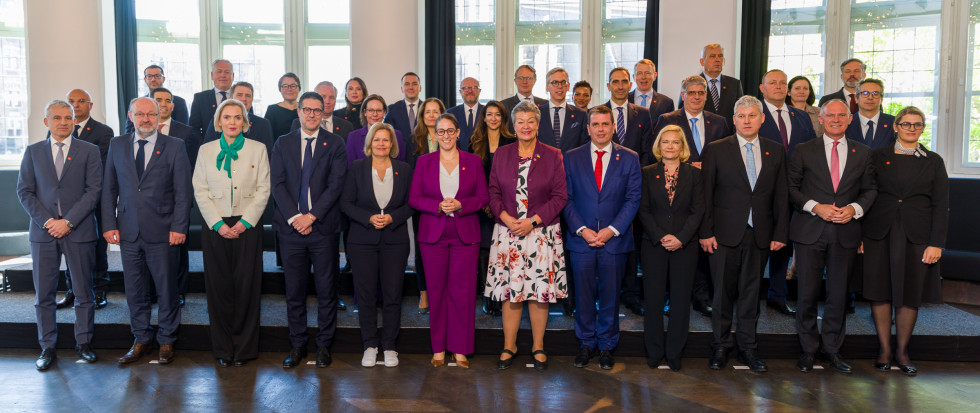Implementation of the Pact on Migration to be a challenging process in terms of reforming the legislation and procedures
In the discussion, the Ministers focused on the Pact's implementation process – or how to put the agreement adopted at the EU level into practice. Three months after the Pact's entry into force, the Commission needs to prepare a Common Implementation Plan. The Plan is to be based on building blocks covering specific areas, which are horizontally connected. The building blocks include a common IT system, a new border control system, fair and effective procedures for international protection, a new Dublin system, effective and fair returns of the migrants, who are not eligible for protection, solidarity that works, readiness, contingent planning and crisis response, integration, prevention of irregular migration and enhancing the legal migration.
In line with the European Union's Common Implementation Plan, the member states supported by the European Commission and six EU Agencies will have to develop their own national implementation plans in the six months following the Pact's entry into force. The implementation of the respective national plans will have to be concluded two years following the entry into force.
Our Ministry of the Interior will play a key role. Due to the strong horizontal nature of the Pact, which addresses migration in a holistic way, we will need to work closely with other Ministries and Offices," the Minister said, adding that the first activities at the Ministry are already underway and that other Ministries and Offices will soon be invited to join the cooperation."
As far as Slovenia is concerned, as the Minister stressed at the conference, it is crucial that we have a common understanding of what implementation means. "The legislation reform in each and every member state must ensure a convergence or harmonisation of the legislation and procedures," Minister Poklukar said. This must be combined with clearly identified task holders and the key duties of the member states and the EU Agencies. "We see the Pact as a multi-pillar one – which must, as such, in addition to the legislative package also take into account the external dimension with the European Commission and the European External Action Service (EEAS) at the helm. We also see legal migration as another integral part of the Pact.
"Implementation will be a challenging process in terms of reforming the legislation and procedures. Important political decisions will also have to be made," the Minister noted at the side-lines of the conference.
After the European Parliament endorsed the Pact in early April, the final decision on the Pact will now be given by the Council of the European Union at one of the upcoming meetings in May. The Pact implementation process will most likely take two years from its entry into force, which is expected to take place in the summer of 2024.
The implementation of the Pact, which received Slovenia's support thanks to the integrated approach in addressing migration, is a challenging process in terms of transposing the legislation and reforming the procedures. The national implementation will be overseen by the Ministry of the Interior together with other relevant Ministries and Government Offices.

Family photo | Author Belgian Presidency of the Council of the European Union

